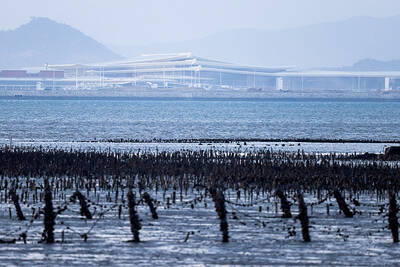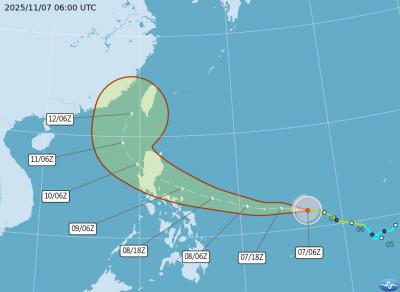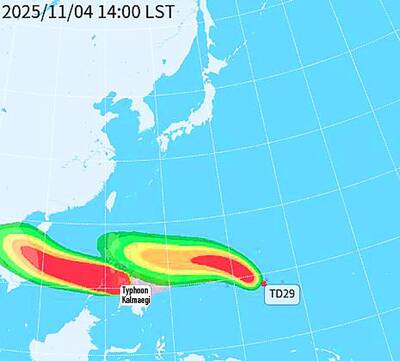As the anniversary of the March 11 magnitude 9.0 earthquake and tsunami that devastated parts of northeastern Japan approaches, some local netizens have organized a campaign on Facebook supporting the residents of Arahama community in Sendai City, Miyagi Prefecture, an area badly hit by the double disaster.
On the page titled “Imploring the Japanese Government to Make Good Use of Taiwanese People’s Love,” the netizens have called on officials to respect the desire of Arahama residents to rebuild their homes in the place many of them have lived for generations.
The Internet campaign came in answer to a call from survivors for help after the Japanese government designated the area around Arahama a “disaster hazard zone” in December last year and ordered all inhabitants to be relocated.
Japanese architect and academic Yasuhiro Ento, who is currently visiting Taiwan, urged Taiwanese, who are no strangers to natural disasters and reconstruction work, to support a campaign by Arahama residents to garner public support for the reconstruction of their community.
Ento, the chief convener of a “yellow handkerchief” campaign for local residents, called for people to write words of support on yellow handkerchiefs and banners, which Japanese earthquake victims regard as symbols of hope, expressing their support for Arahama residents.
Hsia Chu-joe (夏鑄九), a professor at National Taiwan University’s Graduate School of Building and Planning, said Taiwanese donated more than NT$4 billion (US$135 million) last year for Japanese earthquake relief work. It made no sense for Taiwanese to make such generous donations while the Japanese government treated victims so arbitrarily, he said.
“Reconstruction requires the participation of survivors,” he added.
About 170 of the 700 residents of Arahama died in the disaster. Last year, the Japanese government designated the coastal area a “disaster hazard zone” and ordered all residents relocated.
Liao Chia-chan (廖嘉展), chairman of Nantou-based New Homeland Foundation, who has visited the disaster-hit areas of northeastern Japan in person, said that Japan could learn from the experience of Taiwan. For example, the government had relocated disaster-prone villages following the devastation of the magnitude 7.6 921 Earthquake in 1999, and massive flooding and landslides caused by Typhoon Morakot on Aug. 8, 2009.
Liao said that if the people of Arahama were forced to leave the area, where many made a living fishing, they would find it even harder to survive.
One netizen, identified only as Hsu (許), cited examples of Taiwanese forced to relocate after their homes were destroyed, saying that although the relocation provided them with safer places to live, their lives had been “torn from their original culture.” As a result, the devastation wrought by the typhoon had been magnified, he said.
Hsu called on Taiwanese who made donations to the Japanese earthquake victims last year to take a greater interest in whether the victims were being properly looked after.
An exhibition of works by Japanese photographer Junichi Takahashi, which features profiles of people who lost homes, property and family members during the earthquake and tsunami, is currently being held in Taipei.
Takahashi founded “Backup Center Japan” after the earthquake to deliver aid to affected areas. He has since documented the lives of the quake victims through his photography and presented -survivors with albums of photographs as gifts in an effort to help heal their broken hearts.
Behind every photo is a heart-touching story like the one of Chieko Yamane, whose home — which was rebuilt by her parents after a tsunami more than 40 years ago — was badly damaged by the largest earthquake and tsunami ever recorded in Japan.
After deciding to raze the house in which she lived for more than four decades, Yamane wrote on a wall: “Home full of memories. Thank you. Good-bye.”
Despite her sadness at bidding farewell to the old house, she still smiled while telling the photographer that her “love of the sea” had not changed a bit, despite the tsunami that destroyed her home.
See JAPAN’S on Page 9

UNILATERAL MOVES: Officials have raised concerns that Beijing could try to exert economic control over Kinmen in a key development plan next year The Civil Aviation Administration (CAA) yesterday said that China has so far failed to provide any information about a new airport expected to open next year that is less than 10km from a Taiwanese airport, raising flight safety concerns. Xiamen Xiangan International Airport is only about 3km at its closest point from the islands in Kinmen County — the scene of on-off fighting during the Cold War — and construction work can be seen and heard clearly from the Taiwan side. In a written statement sent to Reuters, the CAA said that airports close to each other need detailed advanced

Tropical Storm Fung-Wong would likely strengthen into a typhoon later today as it continues moving westward across the Pacific before heading in Taiwan’s direction next week, the Central Weather Administration (CWA) said. As of 8am, Fung-Wong was about 2,190km east-southeast of Cape Oluanpi (鵝鑾鼻), Taiwan’s southernmost point, moving westward at 25kph and possibly accelerating to 31kph, CWA data showed. The tropical storm is currently over waters east of the Philippines and still far from Taiwan, CWA forecaster Tseng Chao-cheng (曾昭誠) said, adding that it could likely strengthen into a typhoon later in the day. It is forecast to reach the South China Sea

Almost a quarter of volunteer soldiers who signed up from 2021 to last year have sought early discharge, the Legislative Yuan’s Budget Center said in a report. The report said that 12,884 of 52,674 people who volunteered in the period had sought an early exit from the military, returning NT$895.96 million (US$28.86 million) to the government. In 2021, there was a 105.34 percent rise in the volunteer recruitment rate, but the number has steadily declined since then, missing recruitment targets, the Chinese-language United Daily News said, citing the report. In 2021, only 521 volunteers dropped out of the military, the report said, citing

WEATHER Typhoon forming: CWA A tropical depression is expected to form into a typhoon as early as today, the Central Weather Administration (CWA) said yesterday, adding that the storm’s path remains uncertain. Before the weekend, it would move toward the Philippines, the agency said. Some time around Monday next week, it might reach a turning point, either veering north toward waters east of Taiwan or continuing westward across the Philippines, the CWA said. Meanwhile, the eye of Typhoon Kalmaegi was 1,310km south-southeast of Oluanpi (鵝鑾鼻), Taiwan’s southernmost point, as of 2am yesterday, it said. The storm is forecast to move through central